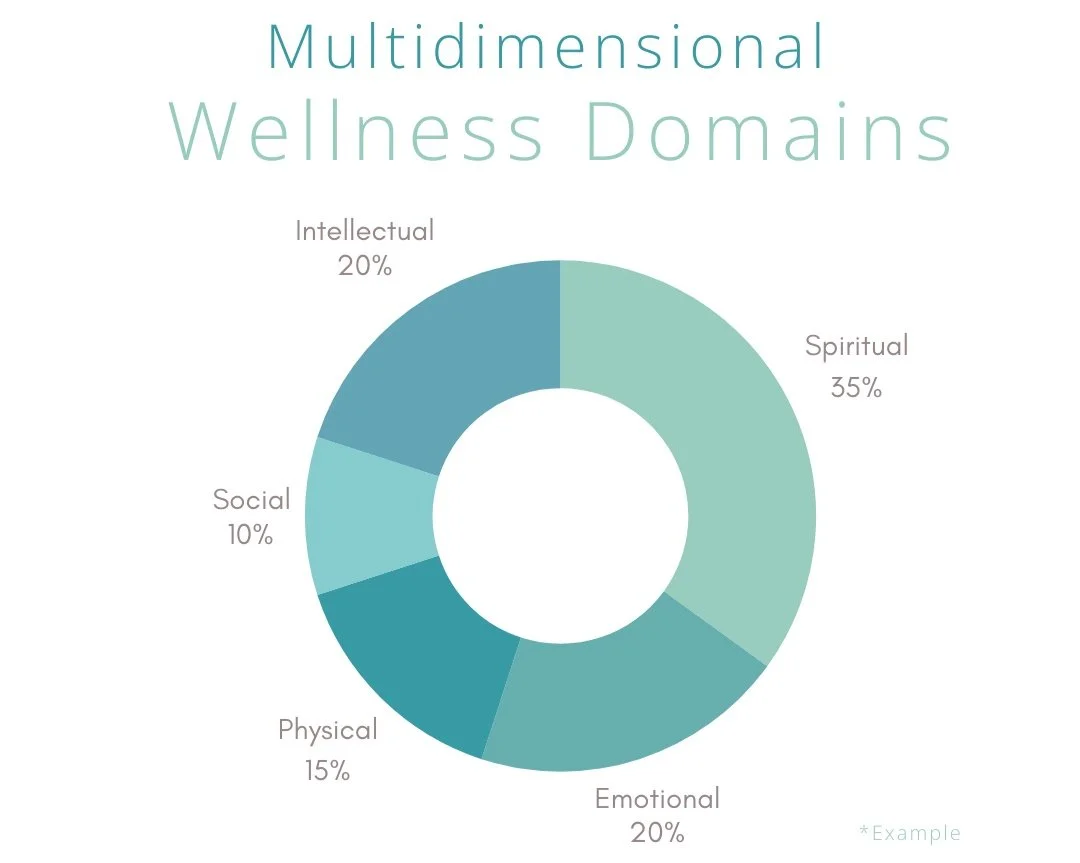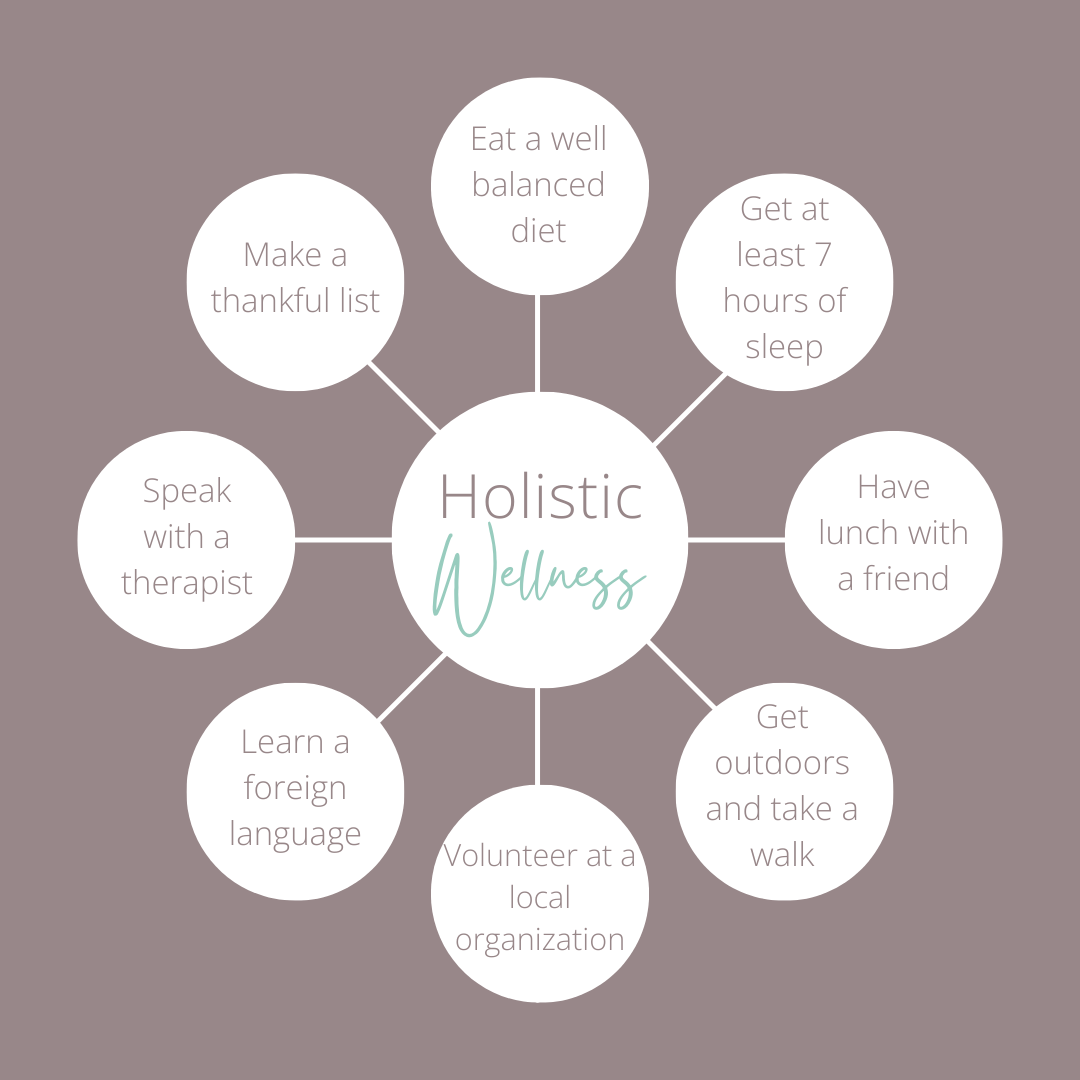Five Dimensions of Holistic Wellness | A Multidimensional Approach to Wellness
Earlier this year, I wrote a blog article about how I planned to lose weight holistically this year. With my first weight loss journey, I took a more dialed-in-focused approach. This is a great approach for when you have very specific goals and want to reach your goals within a specific time frame, for example, preparing for a marathon or a body-building competition. However, the holistic wellness approach takes a multidimensional approach to addressing your wellness goals. This approach works wonders for many because you’re not only addressing the physical aspect of wellness, but you’re also addressing the emotional, spiritual, social, and intellectual aspects, as these areas are, most of the time, interconnected.
I attended a wellness webinar via ACE (American Council on Exercise), and the speakers provided great definitions of the five areas of the wellness domains that encompass our well-being. Since this is my wheelhouse, I thought I would share!
Physical Wellness — Maintaining bodily balance and harmony through an active lifestyle: cardiorespiratory fitness, strength, flexibility, healthy diet (Renger et al., 1990; Hettler, 1980)
Emotional Wellness — Stress management — the ability to manage/express emotions in a healthy manner, self-awareness, self-concept, and acceptance of a wide range of feelings (Leafgren,1990)
Social Wellness — "The quality and extent of interaction with others," sense of connectedness and interdependence with others — social relationships impact health and well-being (e.g., mental health, motivation, coping with stress) (Adams, Bezner, & Steinhardt, 1997)
Intellectual Wellness — Attainment and application of optimal levels of intellectual stimulation, creativity, education, achievement, and critical reasoning (Leafgren, 1990; Hettler,1980)
Spiritual Wellness — Sense of meaning and purpose in life, pursuit of a fulfilling life, and the development of personal values and beliefs (Renger et al., 2000)
When addressing wellness needs and goals, many often focus on one area, maybe two, and most of the time, it’s the physical and emotional domains. Although we tend to focus on those one to two areas, our internal human instinct desires to include those other domains. What I’ve learned is that although there is not a direct focus on all the wellness domains, the other domains are still impacted. All areas are important; however, all areas may not carry the same weight per individual as these domains will vary because we’re all unique and have a unique set of wants and desires.
For example, my primary well-being domains would primarily focus on spiritual, physical, emotional, and intellectual, with my less dominant areas being social. Although I enjoy human connection, it makes up a smaller portion of my well-being domain. I have healthy relationships in my life, but I also enjoy moments of solitude.
It’s important that we address and clearly understand what areas are important to us and identify areas that we would like to see improvement. You may be a physically fit person who has no issues coping with stress, but you may desire more human interconnectedness. Or you may be a spiritually connected person but could improve in the physical domain as you could move your body more and drop those few pounds your doctor or spouse has been hounding you about. Your wellness domain could include all five areas or include only three, as those are most important to you. Or you could include an area that’s not listed but is more important for you.
For the most part, you want to address all areas as much as possible to help you reach your optimal idea of wellness for you. In case you’re having trouble identifying what these wellness domains look like in real life, I wanted to provide a few examples.
Spiritual: Showing gratitude and saying thank you for your life, making a list of things you are thankful for daily, praying, and attending a church service.
Physical: Taking a 30-minute walk a few days per week, drinking an additional 40 oz of water per day, eating a well-balanced diet, and getting seven-plus hours of sleep per night.
Emotional: Asking for advice, asking for help when feeling stressed or overwhelmed, sitting in your feelings and allowing yourself to accept how you truly feel, expressing to a loved one how you feel regarding a situation, and seeking therapy.
Social: Meeting with a close friend for lunch, volunteering, speaking with co-workers, and developing healthy work relationships.
Intellectual: Learning a foreign language, improving your vocabulary, reading an additional book per year, and obtaining a specialized certification.
As you can see, addressing your wellness domains can vary from person to person. Some goals may be simple for some, while other wellness goals may take time and a plan to work through those goals. It doesn’t matter how long it takes to reach the wellness destination, but what matters is that we’re looking at all areas of wellness through a multidimensional lens.
I hope this helps explain the multidimensional holistic approach to achieving our wellness goals.
“Get in the habit of counting your blessings, along with counting your calories. Begin with the blessings of life.” (Stan Toler, Minute Motivators for Weight Loss)
Be true, balanced, and well.



